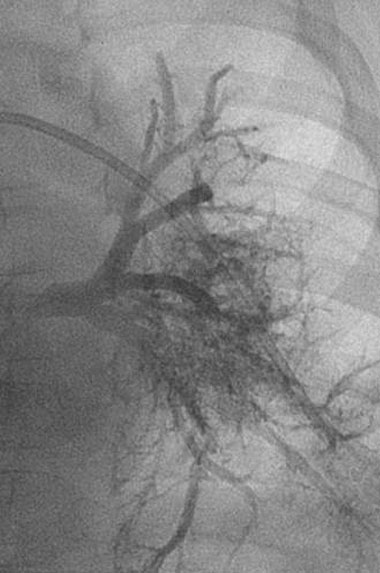Paediatric Cardiac Catheterisation
What is it?
This is an investigation performed under anaesthetic or sedation whereby a small, hollow, flexible tube (a catheter) is passed into the heart via an entry point usually a small cut in the skin at the top of the leg. The catheter is passed into the heart allowing direct measurement of the pressures in various chambers. Dye (actually X-ray contrast) can be injected and X-rays taken to visualise the chambers (angiography).
Various operations can be performed during cardiac catheterisation. These include
- Making extra holes in the heart (see balloon atrial septostomy in transposition of great arteries)
- Closing holes (see atrial septal defect and ventricular septal defect)
- Closing ducts (pipes) (see patent ductus arteriosus)
- Wire meshes (stents) can be inserted to keep blood vessels open (see coarctation)
- Narrow valves or blood vessels can be stretched from within using balloons on the end of the catheters (see pulmonary stenosis and aortic stenosis). This is known as balloon valvuloplasty.
These procedures are known as catheter interventions or interventional cardiology and, in many cases, are now the preferred treatment for these conditions.
What is going to happen?
Prior to the procedure the infant or child is starved and local anaesthetic cream placed on the back of the hand. This allows the insertion of a needle into the vein with the minimum of pain. Sedation or general anaesthesia is then given.
Local anaesthetic is injected into the upper leg and a cut is made in the skin above the artery or vein and a needle, followed by a catheter, is inserted. As described above, this is passed into the heart and the procedure performed. At the end of the procedure, the catheter is removed and a dressing applied to the puncture site at the top of the leg. The infant or child then wakes up.
How do I feel during the procedure?
The infant or child will be asleep or anaesthetised during the procedure. In older teenagers and adults, the procedure is usually carried out under local anaesthetic only. It is not painful.
How long does it take?
It can take anything from 30 minutes to several hours, depending on the complexity of the study and the attempted intervention.
After the procedure how do I feel?
The infant or child should not feel any different after the procedure. They may be rather drowsy as the effects of the sedation or anaesthesia wear off. There may be some discomfort at the site of entry of the needle, but the local anaesthetic should minimise that.
Is there anything I should or should not do?
The child should not get up and walk around for several hours after the procedure. The infant or child can go home later the same day or early the next. Severe activity or lifting should be avoided for a few days after the procedure. After some catheter interventions aspirin is administered for 3 months.
Are there any side effects?
Cardiac catheterisation is very safe but there are risks to any procedure. These will be explained to you during the consent process whereby you sign agreement for your child to have the procedure.

